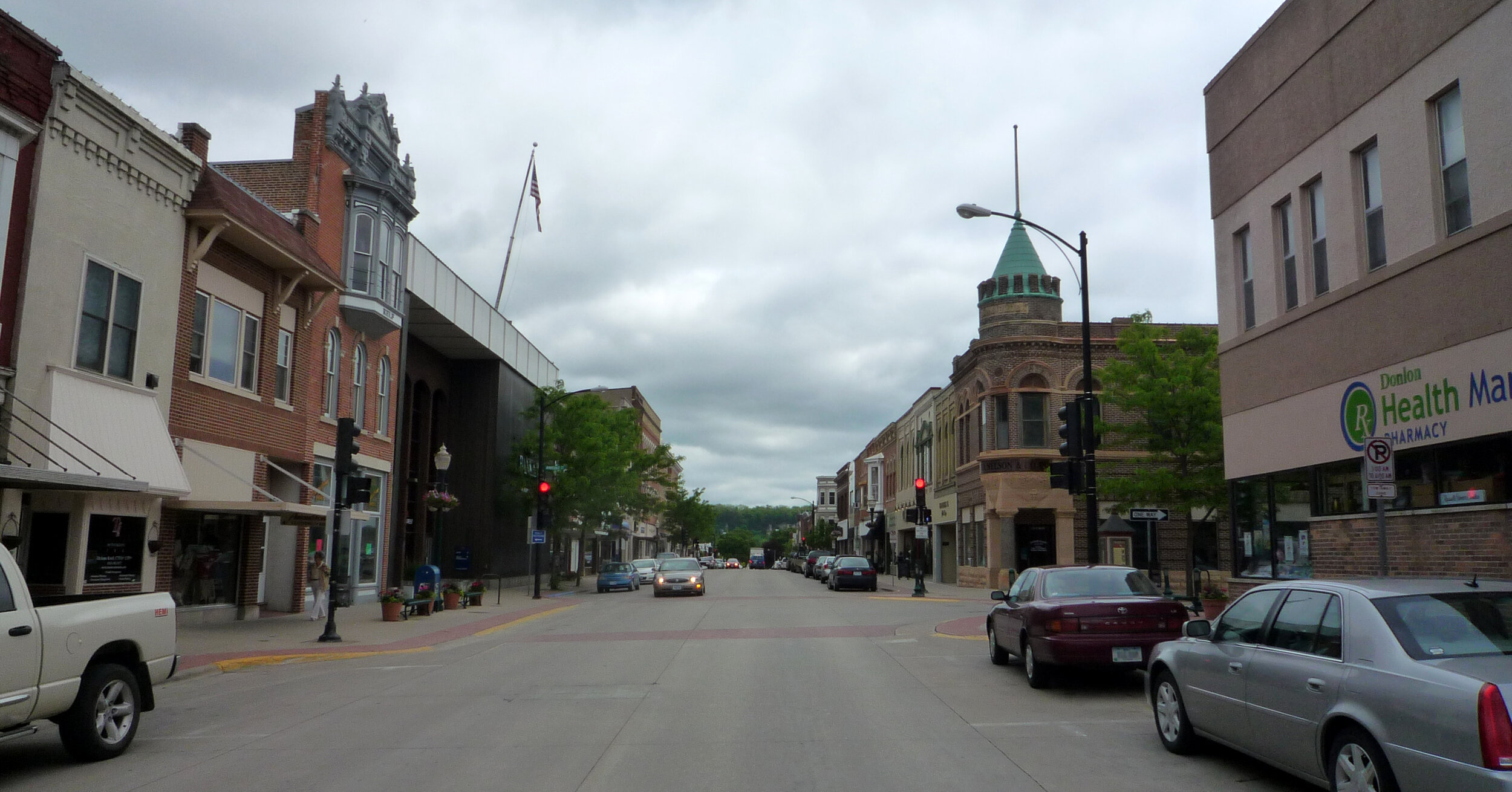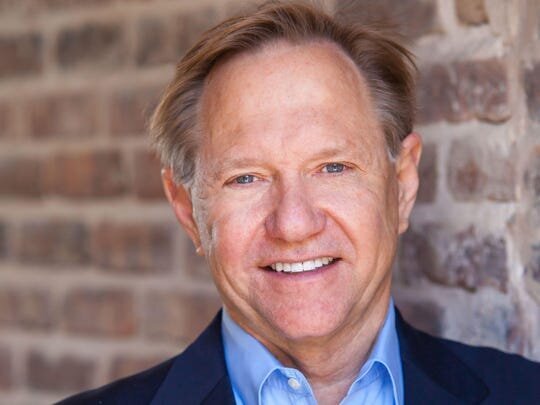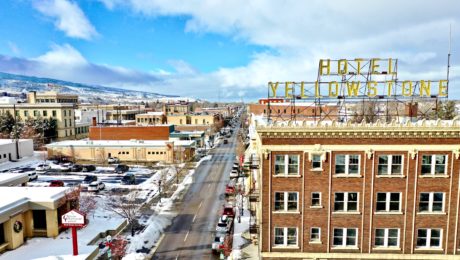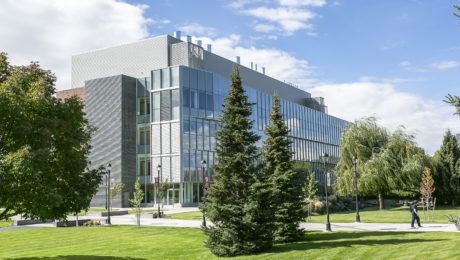Article first appeared in StrongTowns on March 6 2020. Written by Quint Studer.
I’ve spent the last two years traveling across the country working with small to mid-sized towns on their revitalization efforts. And what I find is they’re getting lots of things right.
Civic-minded entrepreneurs and private citizens have taken the bull by the horns and are working hard to make their communities the best they can be. They’re finding ways to reinvent themselves, attract the right kinds of business, and transform into great places to work, live, and play.
Here are a few strategies community leaders are embracing as they work to create vibrancy:
They’re changing the conversation on who drives revitalization. It’s important to get citizens engaged in change. They (not government) have to lead the way. Leaders are getting people talking about and looking at the community in a new way. How can we develop and sustain communities that serve all of us and satisfy our human desire to be connected, all without putting unfair liabilities on future generations?

Decorah, Iowa. Image credit.
They’re tying their plans to economic growth. There’s just no other path for long-term job creation and a strong, sustainable tax base. It’s important for a community to know where its revenue comes from and, more importantly, know what isn’t generating revenue. For example, don’t build a beautiful bike path unless you are confident that it’s part of a plan that will ultimately spark economic growth.
They’re getting smart about the psychology of change. It’s only human to resist change, even when we know we need it. Someone is going to object to even the best-laid, most well-thought-out plans. That’s why leaders go into change initiatives expecting barriers and crafting plans to deal with them. The whole community will never get behind anything, so don’t waste energy on trying to convince the unconvinceable.
They’re connecting change initiatives to what citizens care about most. For example, it’s important not just to throw data at people, but rather to find a “burning platform” that speaks to their emotions. People make decisions with their hearts, not minds. You have to connect to something they care about. In Pensacola our burning platform was: What can we do to keep our children and grandchildren from leaving town? Once we framed the issues that way, we were able to get momentum behind the change.
They’re using objective data to drive decisions. Community dashboards keep critical metrics front and center. Just like a company, a community needs objective metrics to know how healthy they are, to identify areas that need improvement, and to gauge progress over time. They need to see all of them together and updated regularly. Think of how the dashboard of a car shows gas, oil, engine performance, temperature, and so forth. It’s a way to constantly be asking, How is our community doing on areas that are important to us? Wages? Crime? Education? High school dropout rate?
They’re rebuilding their downtowns. To attract businesses and talent to a community, it must have a walkable, livable, vibrant downtown with lots of great restaurants, shops, fun activities, and trendy residential areas. Young people, in particular, want to live, work, and play in the same area. When you start by revitalizing your downtown, it gets people activated and sparks growth in the rest of the community.
They’re making education a priority. A strong education system creates a strong talent base and appeals to investors. That’s why leaders are doing everything they can to improve theirs. In 2014 Pensacola had a 66 percent graduation rate and also a 66 percent kindergarten readiness rate. We connected the dots and realized if we focused on early brain development, we could impact graduation rates long-term. So we started a pilot program with local hospitals to work with new mothers. Now we are on track to become America’s first Early Learning City.
They’re getting aggressive about attracting investors. Local, organic investment is great. Leaders do everything they can to find, engage, and attract investors who already live in or have ties to the community. But they also know they need to attract external investors. This is both a science and an art. The “science” part is the dashboard, because it gives investors the metrics they need to know. The “art” part is the compelling story you build around that data: Does your community have a high graduation rate? Are there a lot of Millennials? Is the cost of living affordable? Focus on these selling points.

Denton, Texas. Image credit.
They’re managing incentives more thoughtfully. Incentives to attract big businesses tend to be overused. Sometimes they’re a good idea. Sometimes they’re not. It’s crucial for leaders to carefully evaluate these deals before deciding, handle them with transparency and fairness, and insist on clearly defined success metrics. And remember: The best strategy is to create such a dynamic, business-friendly community that incentives won’t be necessary. Businesses will want to come anyway.
They’re partnering with government the right way. More and more, leaders are realizing they shouldn’t depend on local government to drive growth. They likely don’t have the budget, nor are elected officials likely to be around to see long-term development projects through. Private investment must lead the way. Government is a wonderful partner and wants the same outcomes citizens do. Elected officials can focus on keeping the community clean and safe, being consistent and fair with guidelines and zoning rules, and enforcing codes.
They’re going to extraordinary lengths to engage citizens. The more successful leaders are at doing this, the more engaged the community becomes, and the more likely it is to meet its goals. His advice to leaders is to seek citizen feedback on everything. Communicate relentlessly. Connect back to the why behind what you’re doing and how it affects them. Once citizens are galvanized, they will turn out, take action, make their voices heard, and applaud leaders for making the community better.
They’re galvanizing their small business communities in ways that go beyond “business-friendliness.” Community leaders are starting to realize it’s not just about starting businesses, but about keeping them growing. Entrepreneurs rarely start out with a strong grasp of basic business skills. This is why Pensacola holds monthly training and development workshops, small business “roundtables,” and even an annual business conference (EntreCon). Once you galvanize the army of citizens who are business owners, they’ll be your catalysts for change and your sustainers. They’ll keep your growth on track.
They’re leveraging small successes to keep the momentum going. Great leaders never declare victory. The work of creating a vibrant community is never done. Use each success to grow more enthusiasm and grow the project base. Once you start having success, everyone starts feeling good about the community, and it becomes easy to keep the less successful projects from bringing down momentum. Community pride has a huge multiplier effect.
Creating a vibrant community is a journey. It’s not easy. But once you can get some wins under your belt, and get citizens behind you, you’ll start to see what is possible. That’s when the magic happens. When individuals come together with a common goal, it creates a synergy that’s unstoppable. This is how we’ll change America for the better—one community at a time.
Featured image via Unsplash.
About the Author

Quint Studer is author of Building a Vibrant Community: How Citizen-Powered Change Is Reshaping America and Wall Street Journal bestseller The Busy Leader’s Handbook: How to Lead People and Places That Thrive. He is founder of Pensacola’s Studer Community Institute, a nonprofit organization focused on improving the community’s quality of life, and Vibrant Community Partners, which coaches communities in building out a blueprint for achieving growth and excellence. Quint speaks and works with communities across the country, helping them execute on their strategic plans, create a better quality of life, and attract and retain talent and investment. He is a businessman, a visionary, an entrepreneur, and a mentor to many. He currently serves as Entrepreneur-in-Residence at the University of West Florida, Executive-in-Residence at George Washington University, and Lecturer at Cornell University.
For more information, please visit www.thebusyleadershandbook.com, www.vibrantcommunityblueprint.com, and www.studeri.org.
The following projects, initiatives, and economic developments are making news in eastern Washington and northern Idaho. This release is distributed by the Inland Northwest Economic Alliance on behalf of its regional partners.
*************
COEUR D’ALENE, Idaho — StanCraft Boat Co. is expanding from manufacturing watercraft to offering aviation services with the addition of a $15 million StanCraft Jet Center at Coeur d’Alene Airport-Pappy Boyington Field. Construction on the new 85,000-square-foot FBO began in August east of Empire Aerospace, and the project is expected to be completed by May 2020. Coeur d’Alene-based Eric Hedlund Design is the architecture firm that designed the structure, and Hayden-based Young Construction Group of Idaho Inc. is the contractor. The 40,000-square-foot Southfield Aviation building will be used as a maintenance facility after the new jet center is built. In addition to refitting jet interiors, StanCraft Jet Center will offer jet refueling, conference rooms, waiting and pilot areas, and a tenant improvement space for offices. Contact Robb Bloem, StanCraft President, for more information.
Dauntless Air, an aerial firefighting company, relocated its aircraft maintenance operations to the Coeur d’Alene airport this year. Dauntless protects people, land and property from the devastation of wildfires through advanced aerial fire suppression tactics in Minnesota, Washington, Alaska, Idaho, North Carolina, California and Oregon. Learn more about the company at www.Dauntlessair.com or contact Brett L’Esperance, Dauntless CEO.
PULLMAN, WA — Washington State University’s Cosmic Crisp apple will hit the fruit stands on December 1, a project over 20 years in the making. Cosmic Crisp was developed specifically for Washington’s climate and growing conditions. WSU researchers combined the disease-resistant Enterprise with the Honeycrisp, known for its crispness, juicy sweetness, and hint of tartness. There are 12 million trees planted in the state of Washington and this year 450,000 boxes of Cosmic Crisp apples will be available. Washington apple growers will have exclusive rights to the Cosmic Crisp for 10 years. Washington produces 65-75 percent of the nation’s apples, yet this is the first variety that originated from the state. Contact Proprietary Variety Management for more information.
HAYDEN, Idaho — Roller coaster manufacturer, Rocky Mountain Construction (RMC), continues its Six Flags success with the innovative Jersey Devil Coaster at Six Flags Great Adventure in Jackson, New Jersey. Known as a single-rail coaster, riders in one-passenger cars will straddle a 15.5-inch-wide steel, monorail track and navigate a twisted course that will include multiple inversions, climbing 130 feet and hitting a top speed of 58 mph along 3.000 feet of monorail track. RMC has grown to 115 full-time employees and 5 manufacturing facilities, totaling more than 75,000 square feet. See USA Today’s article for more.
DAVENPORT, WA – Washington Department of Commerce, USDA, and Washington State University Medical School hosted a daylong workshop with 100 community leaders and residents from Eastern Washington to address the broadband law approved this year by Washington state lawmakers. A new statewide broadband office will approve and distribute grant and loan funds to local governments, tribes, public, private and nonprofit entities working together to expand broadband. The program has $21.5 million available, including $14.5 million for loans and $7 million for grants. The state will prioritize funding to public-private partnerships, with a focus on underserved areas in the state. Contact Margie at Lincoln County EDC for more information.
<ol
MARIES, Idaho — City officials and housing developers, Troy Lozano, are projecting construction of new homes in Ragan’s Addition to begin in early 2020. Lozano purchased 21 lots in the addition and plans to partner with Julian Construction to build single family homes. Updates can be found at greystonehill.com.
OTHELLO, WA — McCain Foods broke ground on a 170,000-square-foot expansion, a project that will cost $300 million and is scheduled for competition in 2021. The expansion to the frozen potato products line is estimated to bring about 180 new jobs to Othello and is expected to be the biggest manufacturer of frozen potato products in the world. Dale McCarthy, McCain Foods, said Othello’s proximity to West Coast shipping makes it a crucial location for the company. “Othello is very strategic for us.” Adams County officials are working with McCain Foods and the state to develop a recruitment process and support. They plan to conduct a countywide housing needs assessment to confirm housing needs and development solutions. Email Adams County Economic Development Council for more info.
MOSCOW, Idaho — Northwest River Supplies (NRS) began operations from its new facility on South Blaine Street on November 5. The newly constructed 155,000-square-foot building includes a warehouse, customer service center, corporate offices and a 3,500-square-foot NRS flagship retail store. The $13.5 million project received a tax break from Latah County that exempts 75 percent of the increase in the site’s value from property taxes for five years, ending in 2023. Read more here.
PULLMAN and COLFAX, Wash. — Two Inland Northwest businesses were recognized through the Washington Secretary of State’s Corporations for Communities Award Program. Schweitzer Engineering Laboratories, of Pullman, was recognized for donating and raising funds for local charities and providing money for employees to donate to the charity of their choice. Bunyard Automotive, of Colfax, was honored for repairing vehicles at little to no cost for families in need. Both businesses were awarded the National Association of Secretaries of State Medallion for their efforts in their communities. The full press release is here.
OSBURN, Idaho — The city dedicated the newly completed Shoshone Fire District #1 facility, which was awarded a $500,000.00 block grant earlier this year. The new 10,000-square-foot facility is a significant fire, training, and emergency services upgrade for the region. Contact Silver Valley EDC for more information.
LEWISTON, Idaho — With a start-up $839,809 grant from the National Science Foundation, the Northwest Intermountain Manufacturing (NIMA) Association has created a pilot project to train high school students in fabrication and machining. In partnership with Lewis-Clark State College, the Clearwater Economic Development Association, the University of Idaho and 16 school districts, the program gives students a solid skill set and educational background in manufacturing so they can be ready to start work right after high school for local companies. The first group of students will complete the program in 2020. See Idaho Department of Labor article here.
LIBERTY LAKE, WA — In response to a gap in the city’s flex office market, Liberty Lake Coworking LLC will open Jan. 2 at 23505 E. Appleway. The 4,600-square-foot space will have 11 private offices, six semi-private spaces, and open table space. The space will also feature booths for private calls, two semi-private meeting booths, a podcast and media room, access to high-speed fiber internet, and free parking. More details can be found here.
POST FALLS, Idaho — Construction on Idaho’s fourth state veterans’ home is expected to start next year. The 82,000 square foot project is to be built in Riverbend Commerce Park in Post Falls and will have 64 beds. The home will be built on 7.3 acres donated by the Jacklin Land Co. in Riverbend Commerce Park on Post Falls’ west side. It is adjacent to BioPol Laboratory and Buck Knives. See the full article here.
SPOKANE, WA — The Toolbox manufacturing incubator expanded to 17,000 square feet in a recent move to Logan Neighborhood. Anchored in the space is Vestis, which manufactures specially designed commercial awnings and canopies. The Toolbox continues to serve as collaborative space where established companies and business mentors share expertise, ideas, tools, and equipment with manufacturing startup and entrepreneurs. The Toolbox is overseen by nonprofit Spokane Create. Read full article here.
On December 4, the Edward Lowe Foundation and Washington Department of Commerce will lead businesses through the basics of Thrive!, a new state program that helps second-stages businesses to increase revenue, streamline operations, and expand into new markets. Contact Susan Joseph Nielsen for more information about Thrive!
POST FALLS, Idaho— Northwest Specialty Hospital completed a $4.5 million addition to include an Endoscopy Center and two additional operating rooms. The 15,000-square-foot addition brings to eight the number of operating rooms for patient surgery. The Endoscopy Center, a 8,650-square-foot addition to the hospital, features two procedure rooms, one exam room and eight preoperative and post-anesthesia care unit bays. See company news release for more information.
************************
Inland Northwest Economic Alliance (INEA) is a consortium of fourteen economic development agencies representing fifteen counties in the North Idaho/Eastern Washington region. The collaborative effort is aimed at building economic growth through enhancing the brand recognition of the Inland Northwest and its communities and showcasing its business value.
This excerpt is from an article that first appeared in The Spokesman-Review, Sun., Feb. 3, 2019 at 4 a.m. By Amy Edelen and Becky Kramer.
Exotic Metals Forming LLC has submitted plans for future expansion on the West Plains.
Company officials didn’t return calls last week, but documents filed with the city of Airway Heights indicate Exotic Metals is planning two expansions on the western portion of the 56.6 acres of property it owns at12821 W. McFarlane Road.
The first phase would be construction of a new manufacturing facility and employee parking lot, which could begin as early as this year for completion in 2020. The second phase would mirror the first expansion, but the company doesn’t have a timeline for that work.
Exotic Metals would bring on about 150 staff with each expansion phase, according to company documents.
Company officials have submitted a checklist for the planned development under Washington’s State Environmental Policy Act. Airway Heights officials have asked for additional information about traffic impacts.
Originally appeared in the Spokesman-Review, 24 January 2019. By Becky Kramer of THE SPOKESMAN-REVIEW
Education, health were key drivers in 2018, says economist
About 6,200 new jobs were created in the Spokane metropolitan area last year, reflecting the fourth year of strong regional job growth. The area includes Spokane, Stevens and Pend Oreille counties. For four years straight, the three-county area has gained more than 5,000 jobs annually.
Education and health care were drivers of job growth in 2018, said Doug Tweedy, regional labor economist for the Washington Employment Security Department. Both sectors added about 1,500 jobs last year.
Manufacturing also had a strong year, and so did professional and technical jobs. Attorneys’ offices and accountants were hiring last year, Tweedy said.
For comparison, the Spokane metro area created about 5,300 jobs in 2017.
Unemployment averaged 6 percent for the Spokane metro area in 2018, compared to 5.5 percent the year before.
Spokane County’s unemployment averaged 5.3 percent last year; Stevens County was at 7.2 percent; and Pend Oreille County at 7.3 percent.
CONTACT THE WRITER:(509) 459-5466 [email protected]



